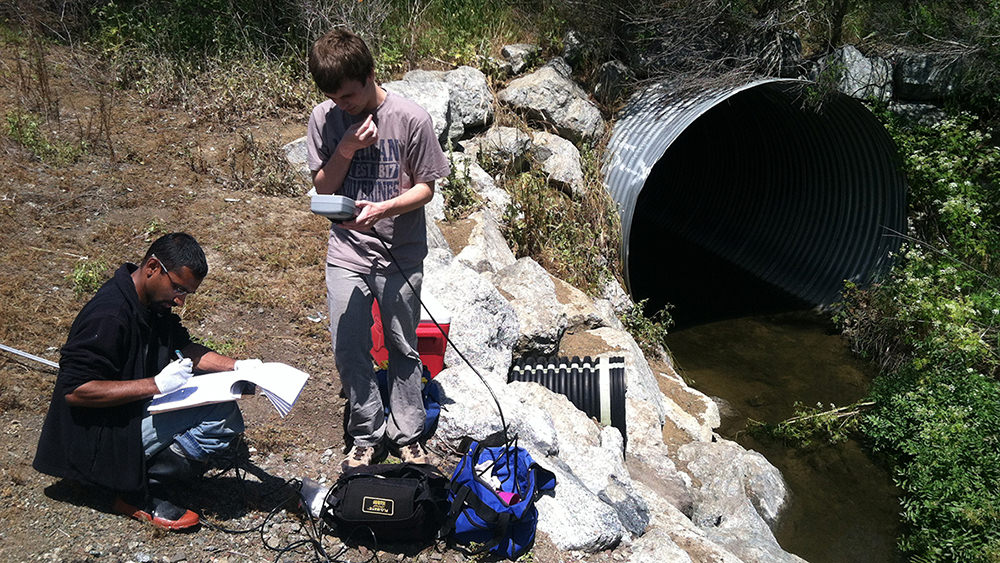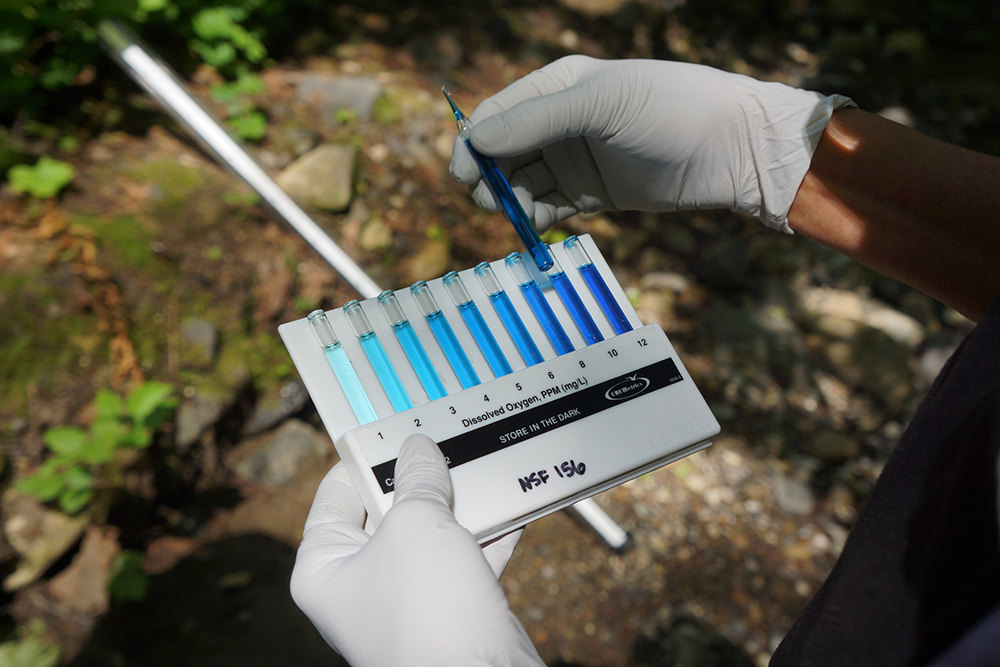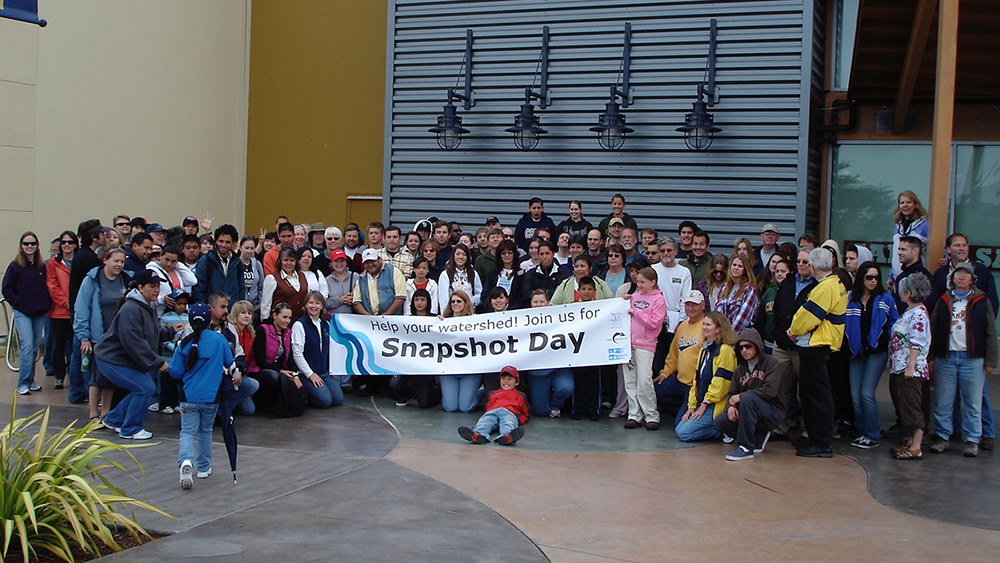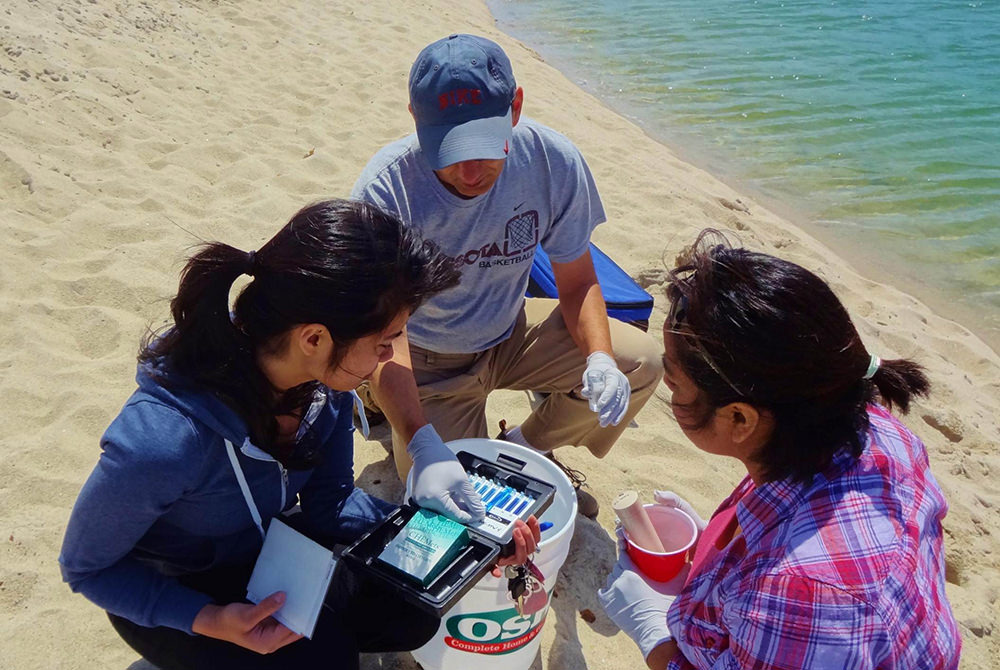What’s in your watershed? Snapshot Day celebrates 20 years of water quality monitoring
By Amity Wood
April 2019
Early on brisk, sunny mornings during the first Saturday in each May, hundreds of trained volunteers gather at a Snapshot Day organizing hub. After grabbing a hot beverage and a morning snack, they listen to a last-minute safety briefing before heading out to participate in the largest single-day water monitoring event in California. “Be safe, have fun, and remember to put on your protective gloves!” says Lisa Emanuelson, Snapshot Day coordinator for Monterey Bay National Marine Sanctuary.
Each monitoring team collects their “bucket kit” packed with field sampling equipment including water collection bottles, data sheets, and water testing supplies. Then, they enthusiastically venture out to one of 250 designated creek and river sampling sites along California’s central coast from Pacifica to Morro Bay. May 4, 2019, will mark the 20th anniversary of Snapshot Day in Monterey Bay National Marine Sanctuary.

A collaborative approach
Snapshot Day exemplifies a successful 20-year collaboration between dedicated volunteers and a network of water quality professionals on the central California coast. Diverse public agencies, local companies, non-profit organizations, and citizens are all committed to healthy coastal watersheds and a thriving Monterey Bay National Marine Sanctuary ecosystem. The sanctuary includes 276 miles of shoreline across four coastal counties that are home to more than 1.8 million residents. These shorelines leave it vulnerable to pollution from urban, rural, and agricultural sources from the 10 watersheds directly connected to it.

Clean water is critical to ensuring a wealth of biological diversity, spectacular coastal scenery, and outstanding ocean recreational and commercial opportunities in the sanctuary. With that in mind, 20 years ago the sanctuary teamed up with the Coastal Watershed Council and The Center for Marine Conservation. Together, we organized the first ever California Snapshot Day monitoring event for Earth Day, April 22, 2000. We sought to better understand land-based sources of ocean pollution so that we could continue to protect the sanctuary.
According to Donna Meyers, former Coastal Watershed Council director, “The event helped bring awareness to water quality issues, initiated a huge citizen science project that still exists today, and got people out in their local creeks to test the water and feel like they were contributing to protecting their sanctuary.”
Today, coordinated partner efforts persist. Sanctuary Water Quality Protection Program staff coordinate and train volunteers in San Mateo, Monterey, and San Luis Obispo counties, while the Coastal Watershed Council lead efforts in Santa Cruz county. Joined by support from the San Mateo County Resource Conservation District, all Snapshot Day partners share a common goal: to protect and enhance water quality throughout sanctuary watersheds.

Volunteers are vital
At more than 200 coastal sampling sites, trained volunteers measure bodies of water for temperature, dissolved oxygen, pH, conductivity, and turbidity. Volunteers also collect samples for laboratory analysis of nutrients and bacteria levels. These water quality measurements help identify the overall health of a body of water, potential threats to fish and other aquatic organisms, whether the water is safe for human contact, and potential sources of water quality problems. Volunteers also get the added benefit of experiencing nature while becoming more familiar with “off the beaten path” locations.
“Snapshot Day provides one way for everyday citizen scientists to make meaningful contributions. By sampling in multiple locations over many years, we can watch the conditions and identify trends, both in improvements and problem areas,” says long-time Snapshot Day volunteer Bruce Ashley.
Not only do volunteers play a role in collecting robust and meaningful data for identifying long-term water quality trends, their actions help prioritize management decisions for resource agencies and local governments. A natural outcome of Snapshot Day is building a community of engaged and informed people who are committed to increasing public awareness, environmental stewardship, and protection of sanctuary watersheds in their own backyards.

Actions speak loudly
A one-day “snapshot” monitoring effort in coastal rivers and creeks of this magnitude could only be accomplished by a substantial number of dedicated citizen scientist volunteers. Since 2000, a total of 3,783 volunteers have donated 18,915 hours of their time to monitor any of the 250 Snapshot Day sites, equivalent to $384,000 of in-kind contributions.
Monterey Bay National Marine Sanctuary superintendent Paul Michel attests that “We depend on partners and volunteers to inform and inspire the public, to provide important data, and help manage such a large and diverse sanctuary. Snapshot Day in particular, with the critically important water quality data it provides, simply could not be done without the dedication of so many volunteers and partners.”
Twenty years of information gathered by Snapshot Day volunteers is used to assess trends and inform pollution reduction efforts, and allows us to focus attention on areas that need it the most. Snapshot Day makes important connections between the public and their local waterways while encouraging personal actions to help improve water quality that ultimately benefits a healthy sanctuary ecosystem.
Amity Wood is the education and outreach coordinator for Monterey Bay National Marine Sanctuary.

